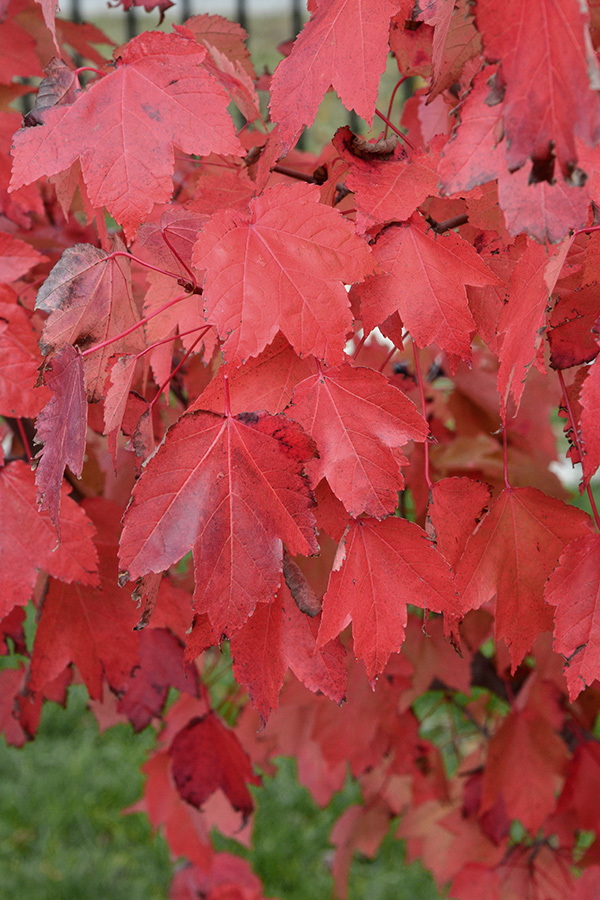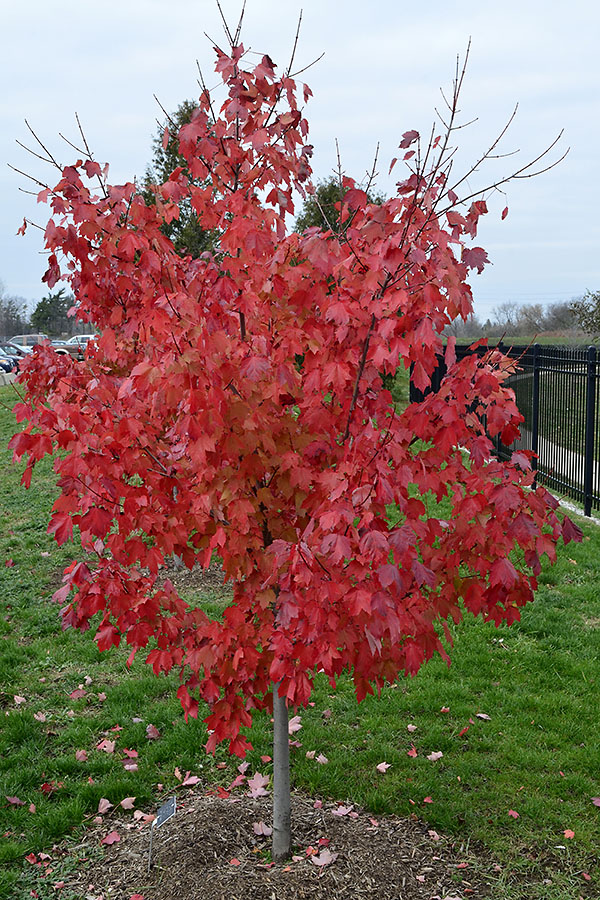| ID Characteristic | Noted for it's stunning uniform red colour in autumn. |
| Shape | Broadly pyramidal to rounded. |
| Landscape | An excellent tree for residential and suburban areas however, caution should be exercised while mowing around its trunk due to its fragile bark. It looks best in groups or clusters but is also suited to use in buffer strips around parking lots, near a decks or patios and as a screen/shade or specimen plant. |
| Cultivation | Best grown in moist but well-drained soil, either in full sun or partial shade. |
| Pests | It may be susceptible to verticillium wilt and also possible inter-veinal chlorosis due when planted in high pH soils. Aphids and horse chestnut scale may also be a problem. |
| Notable Specimens | The Gardens of Fanshawe College, London, Ontario, Canada. |
| Habitat | Horticultural origin. |
| Bark/Stem Description | Often smooth and mid-grey in colour, thin and easily damaged. |
| Flower/Leaf Bud Description | The red terminal buds can be 3-4 mm long, many scaled, and are round and smooth. |
| Leaf Description | The leaves are opposite, simple, ovate-palmate, light green spring through summer, but turning brilliant red in the autumn. |
| Flower Description | The flowers are red and have 5 small sepals and petals clustered on slender stalks. The flowers appear before leaf emergence with the male and female blooms found on separate branches. |
| Texture Description | A medium textured tree. |


